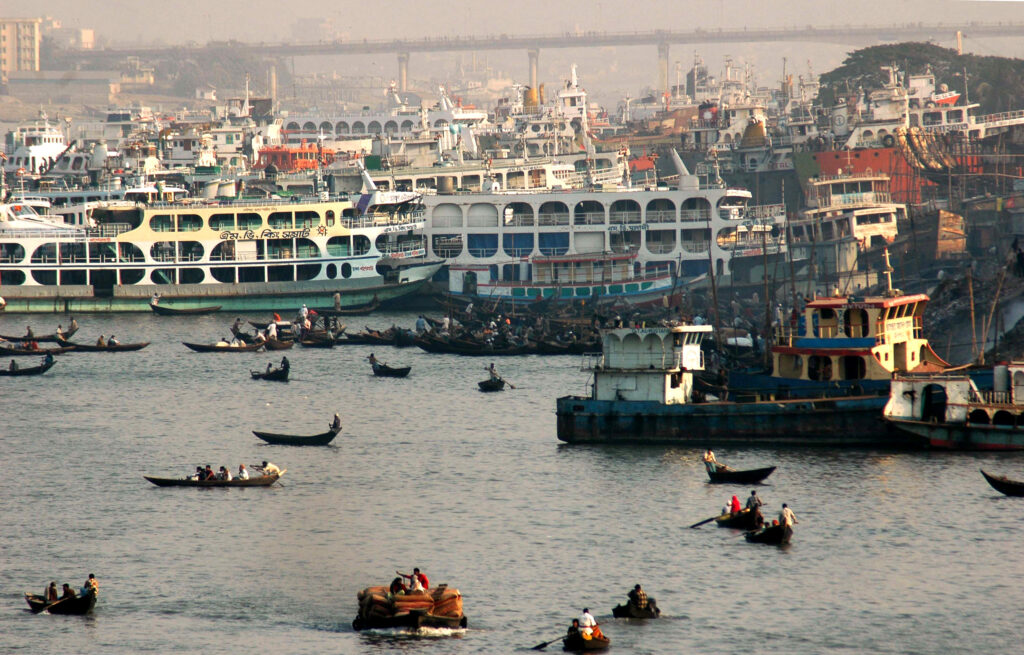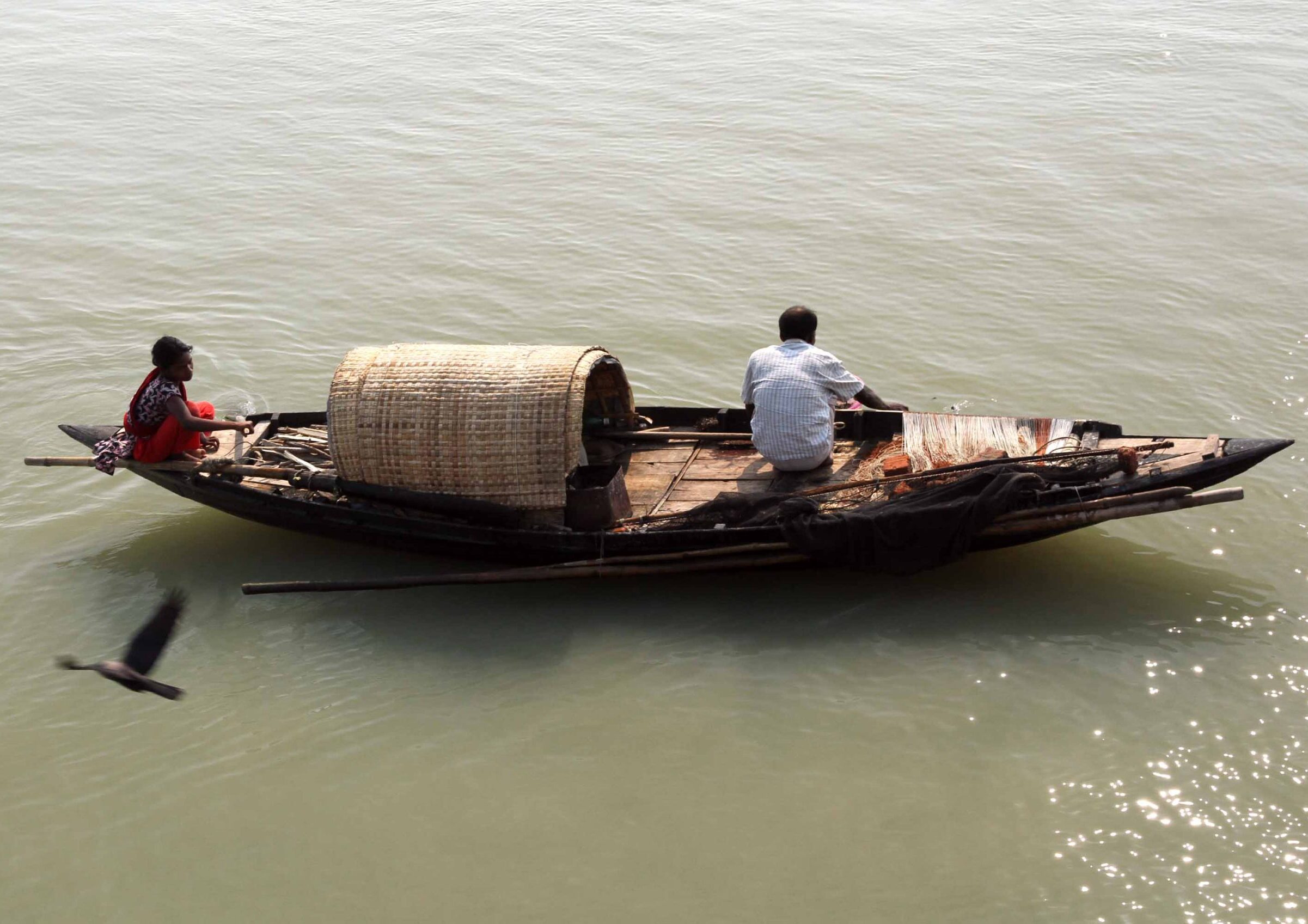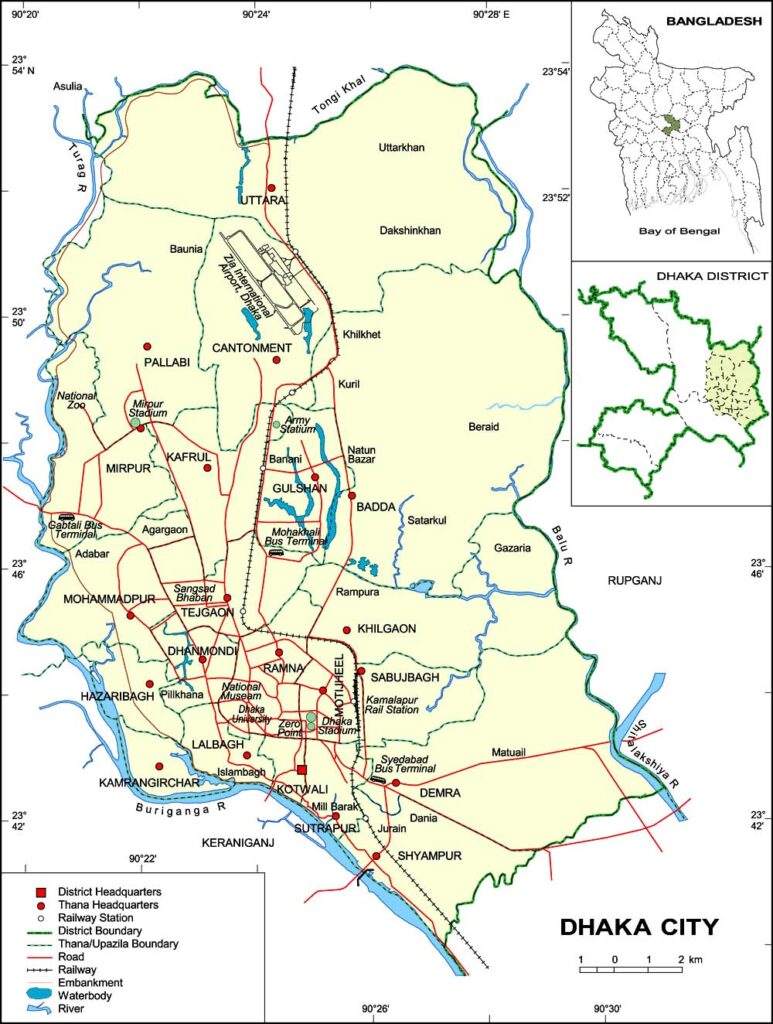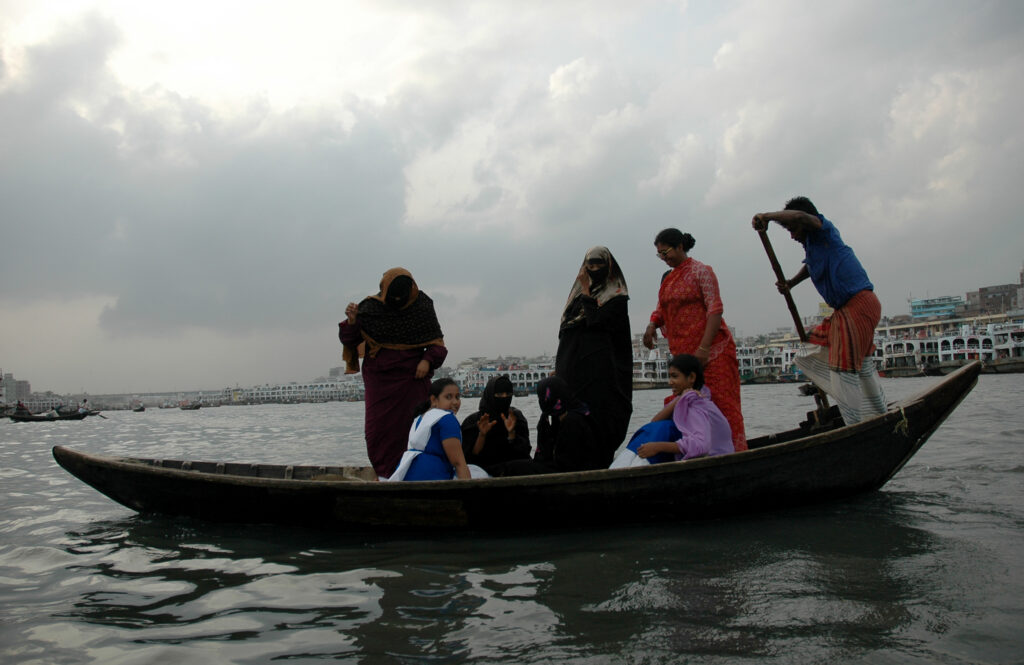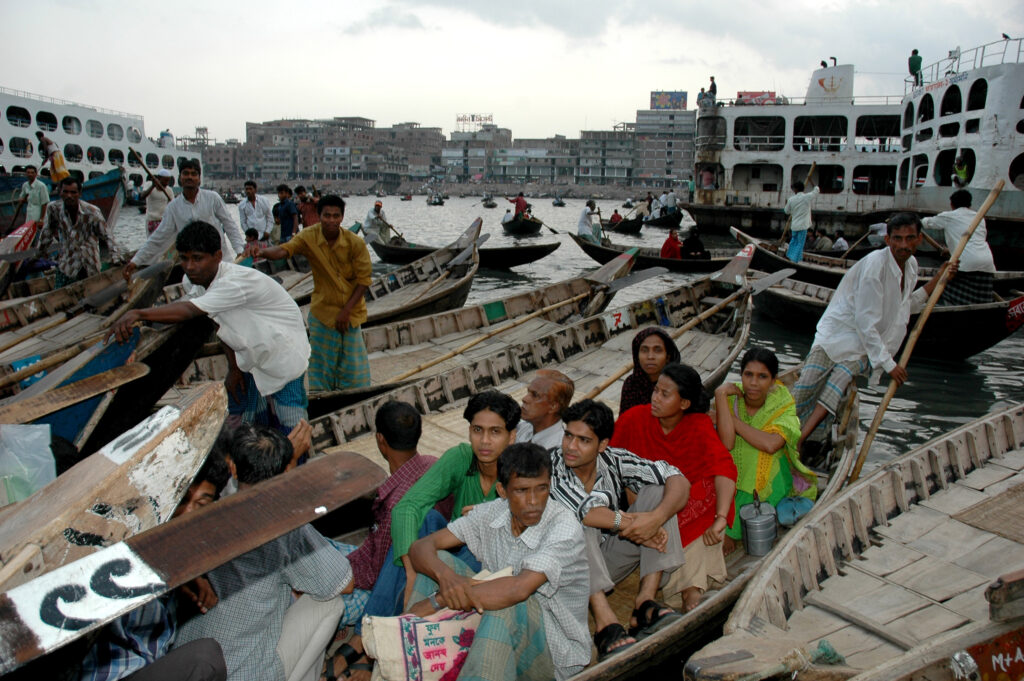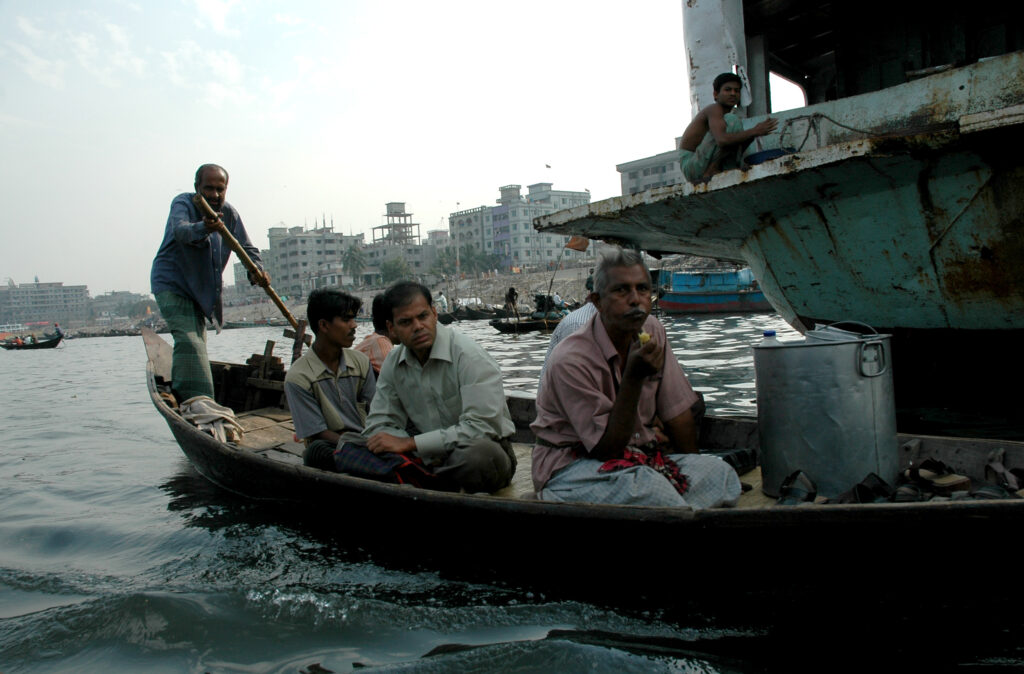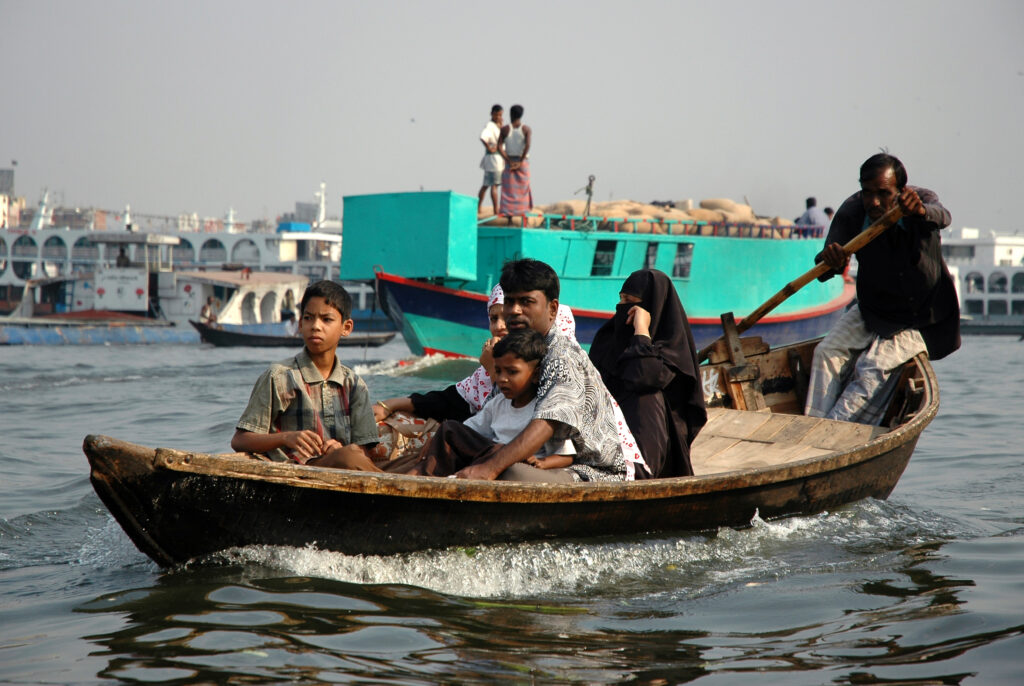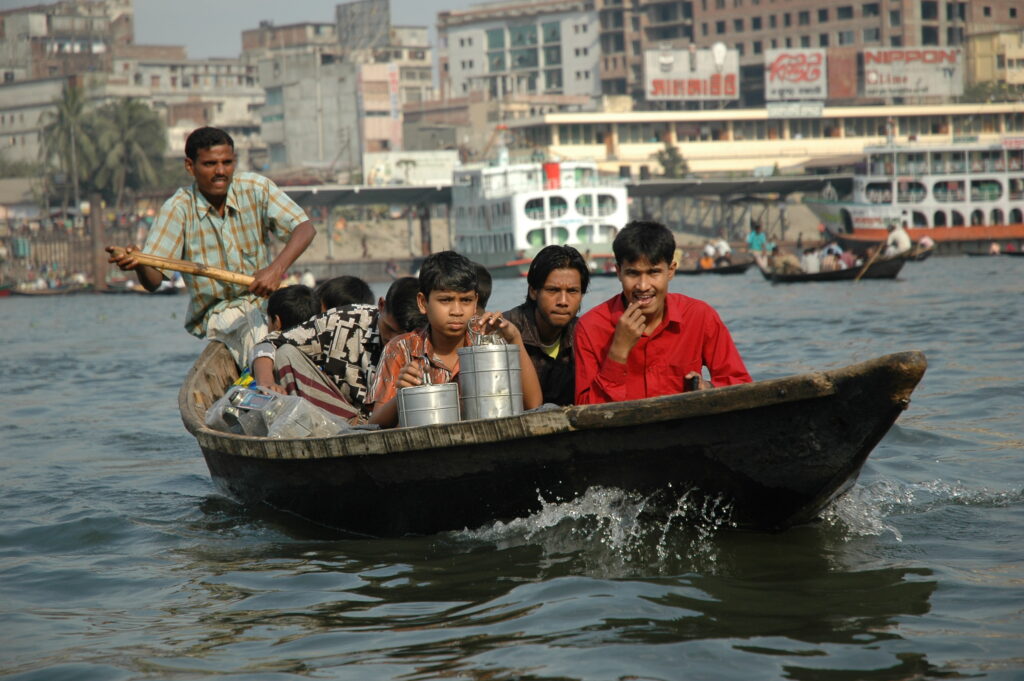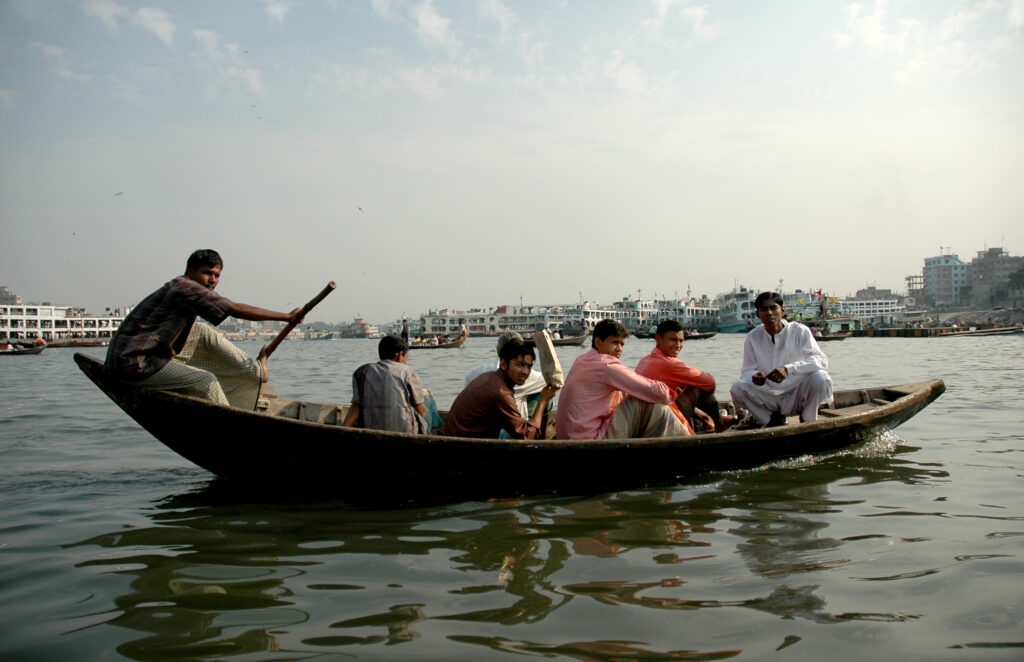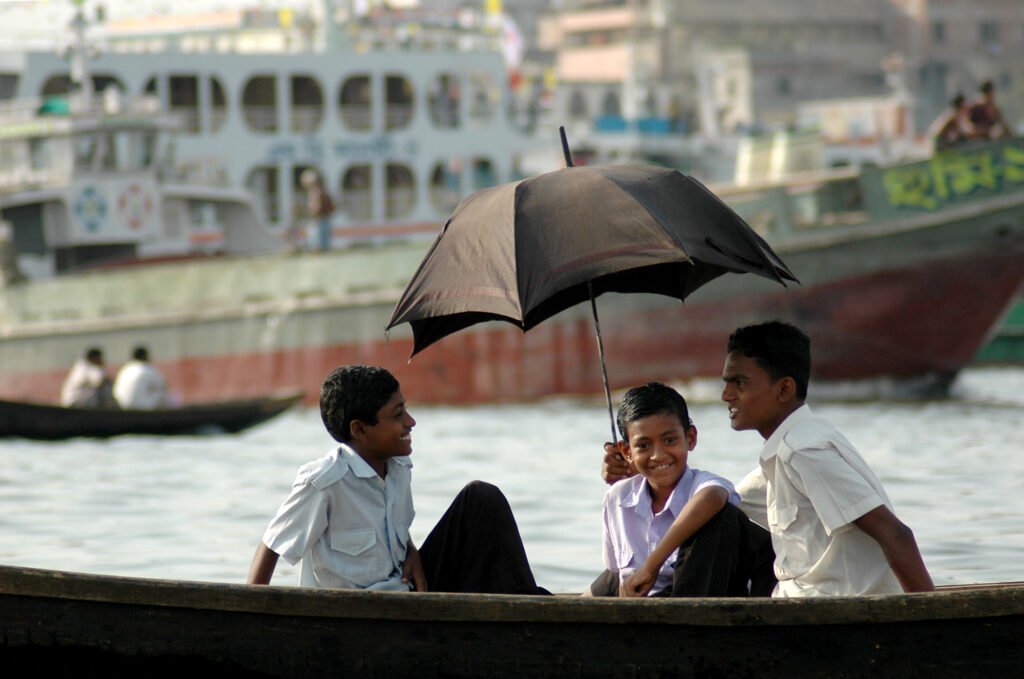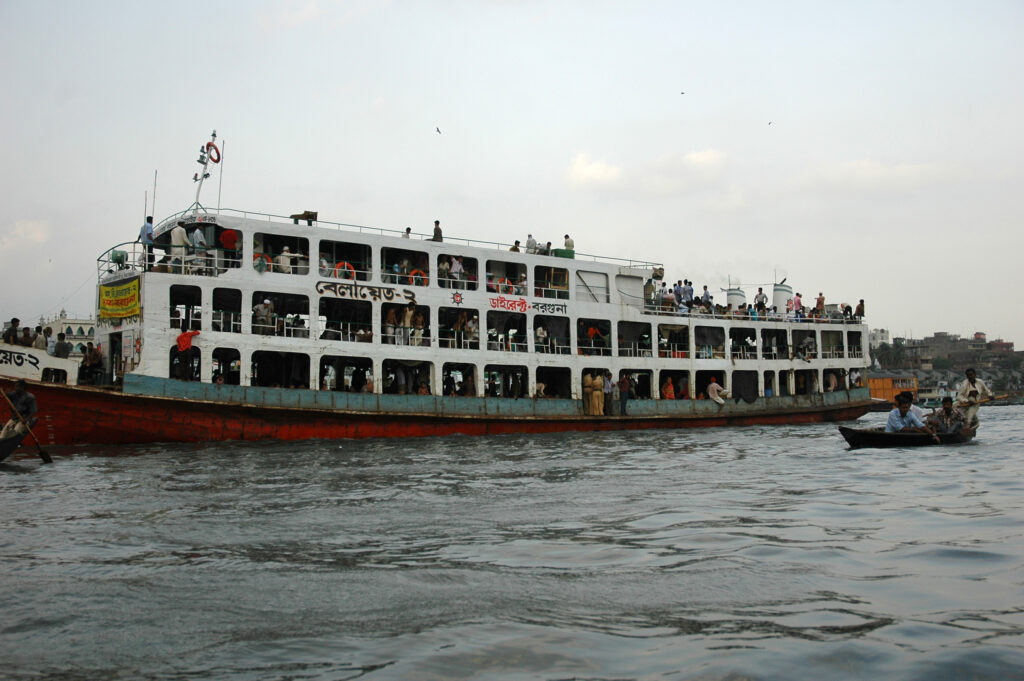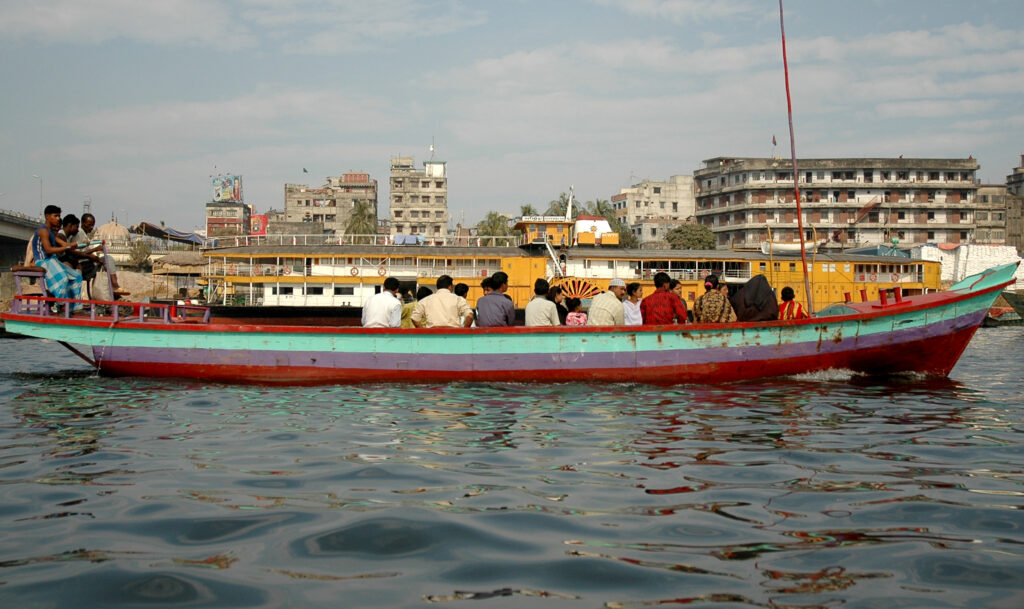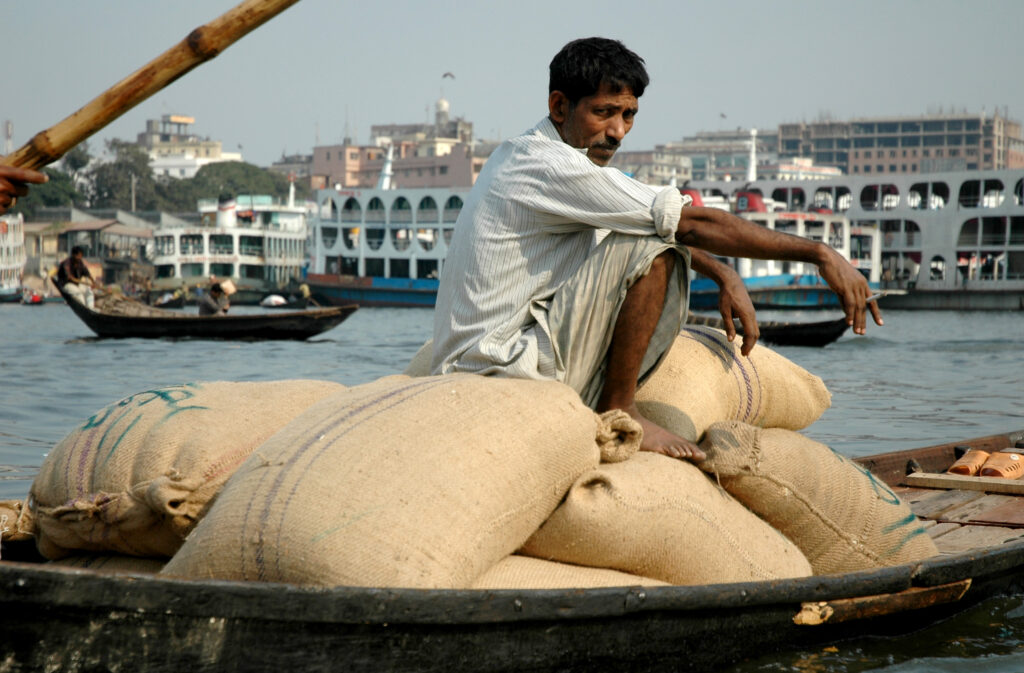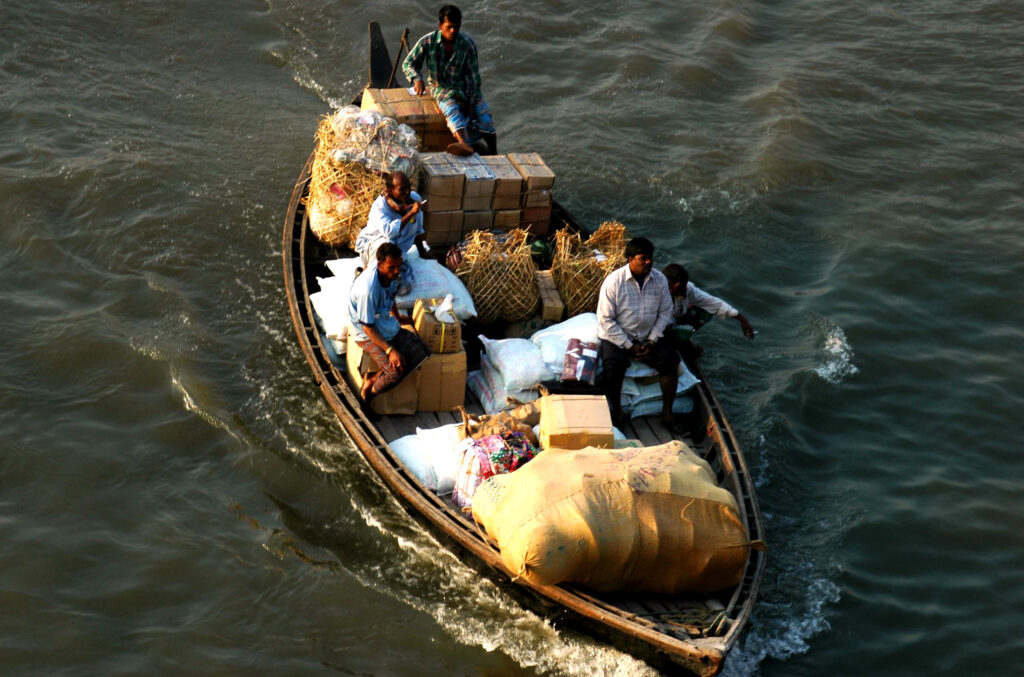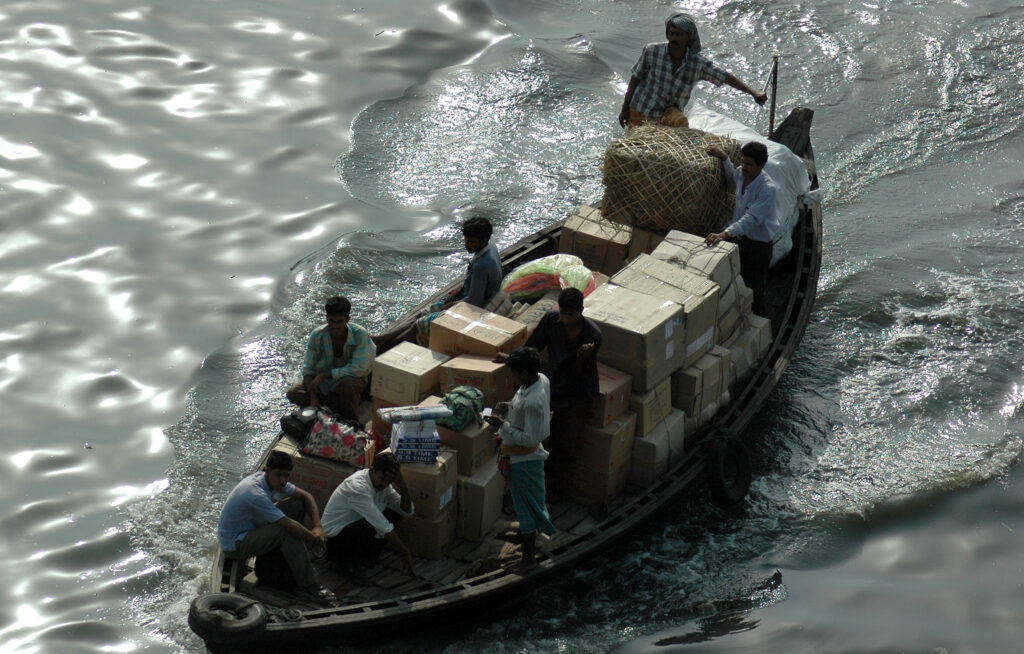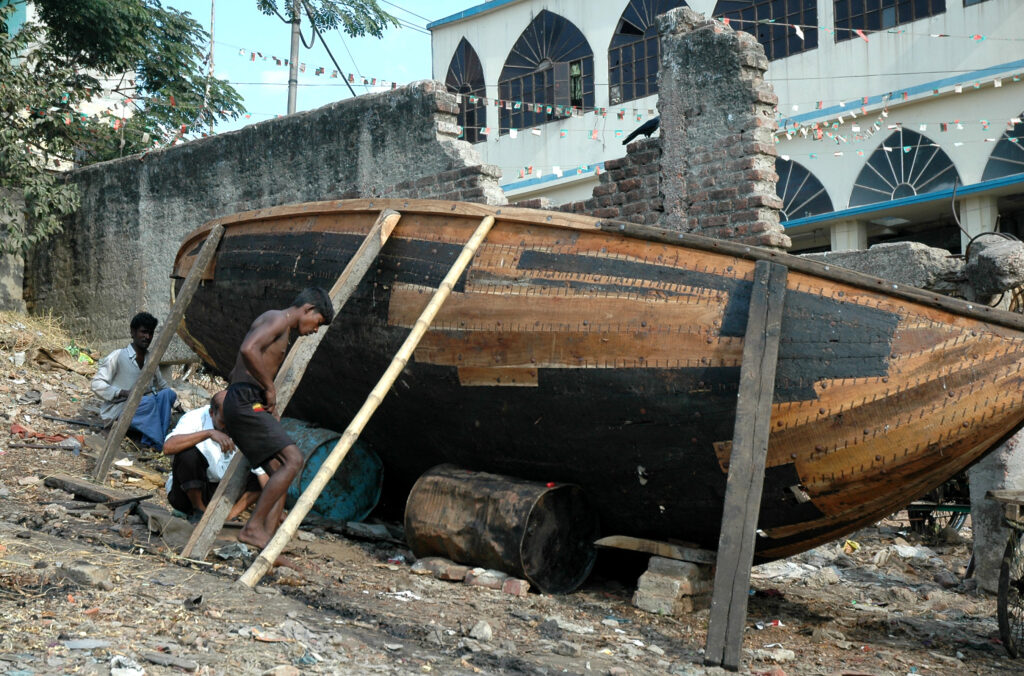The city of Dhaka stands on the northern bank of Buriganga River a long-standing lifeline for much of the city’s needs. The river acts as a convenient, water-based transportation/communication resource that connects the city with many parts of the country. It was the strategic location of Dhaka, with easy water-based transport access to many places that enabled the city to develop on the current site. It was also the reason why the Moghuls chose Dhaka for their provincial capital in 1610.
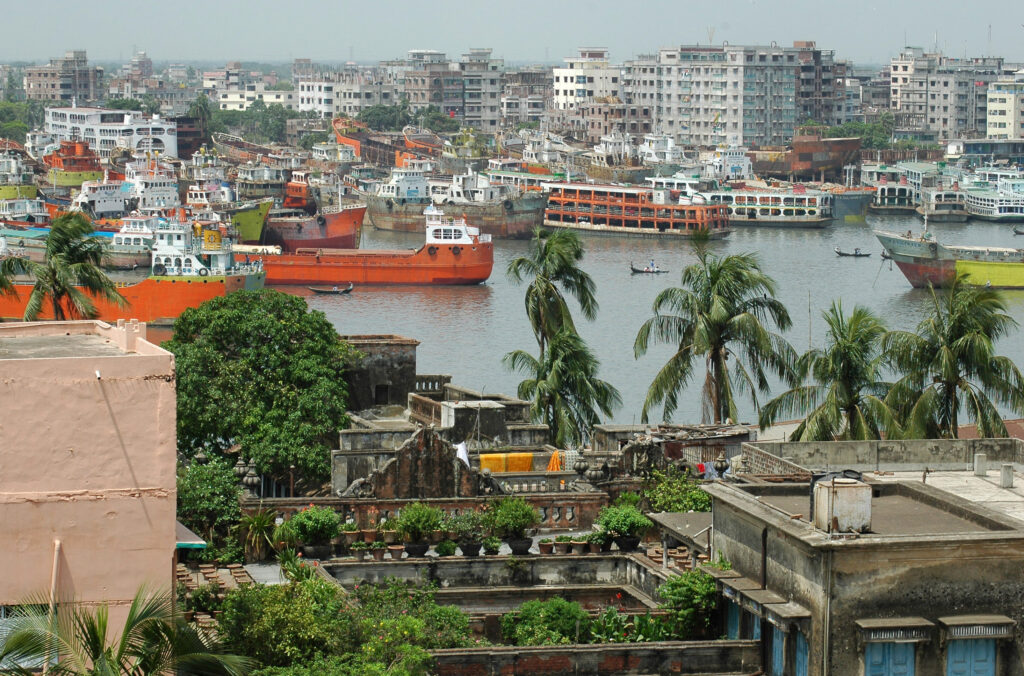
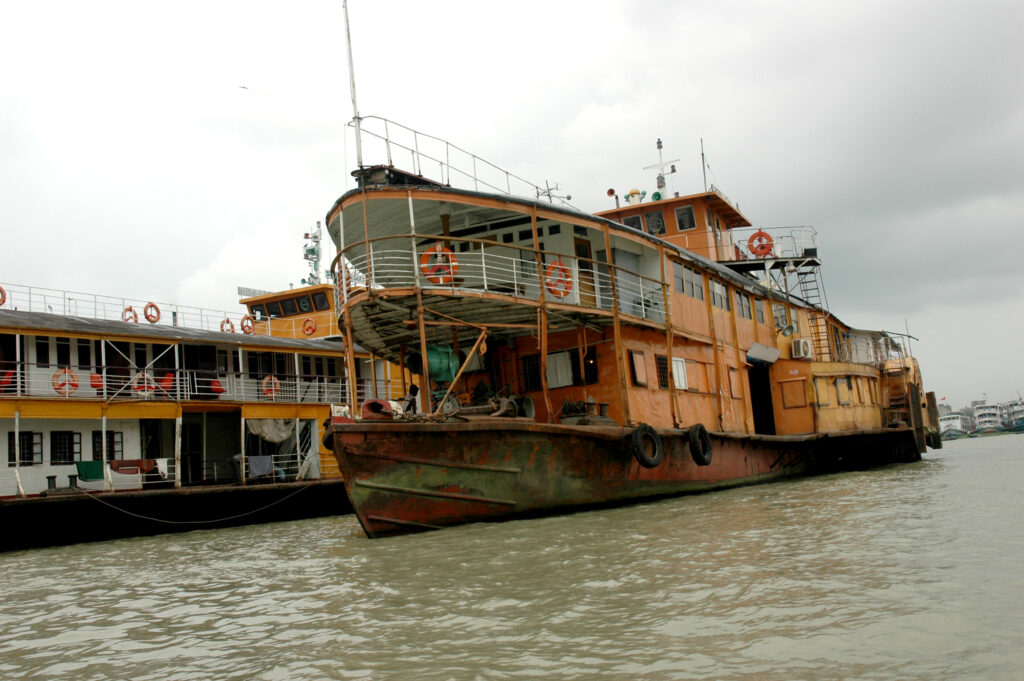
The river is approximately 27 miles long and originates from river Dhaleshwari near Kalatia and joins river Turag in Kamrangirchar in Dhaka City. It is a busy river, transporting both people and goods to and from many parts of the country. Small boats ferry passengers across the river to the other side for work, education and leisure purposes. Even though two bridges have been built in the last two decades to connect the two sides of the river, people still use small boats to travel across. It is cheaper and more convenient and also the boats can drop passengers to convenient locations of their choice.
Unlike today, Buriganga River’s frontage at the northern bank was a much sought-after place for the rich and wealthy sections of the people. In the past, they owned lands and built large houses. From the latter part of the nineteenth century, much of the architecture of buildings was based on European style although there were also creative syntheses with local traditions. It was also the place in East Bengal where European traders came and established their trading houses and factories in the seventeenth century.
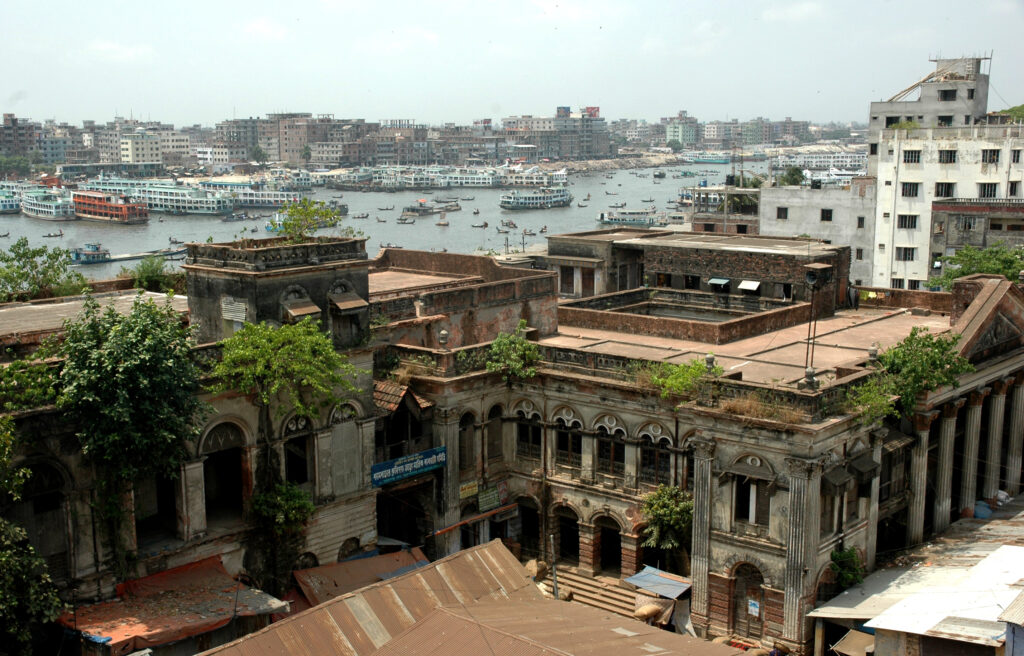
The picture below is a view of Ahsan Manzil from the river, which was the residential palace of the Dhaka Nawabs, completed in 1872. It occupies a site that was at one time the trading based of the French, but it was purchased from them by Khawaja Alimullah in 1830. Examples of other important buildings in the area are the Northbrook Hall and Ruplal House, situated on Buckland Bund in the Farashganj area along the river.
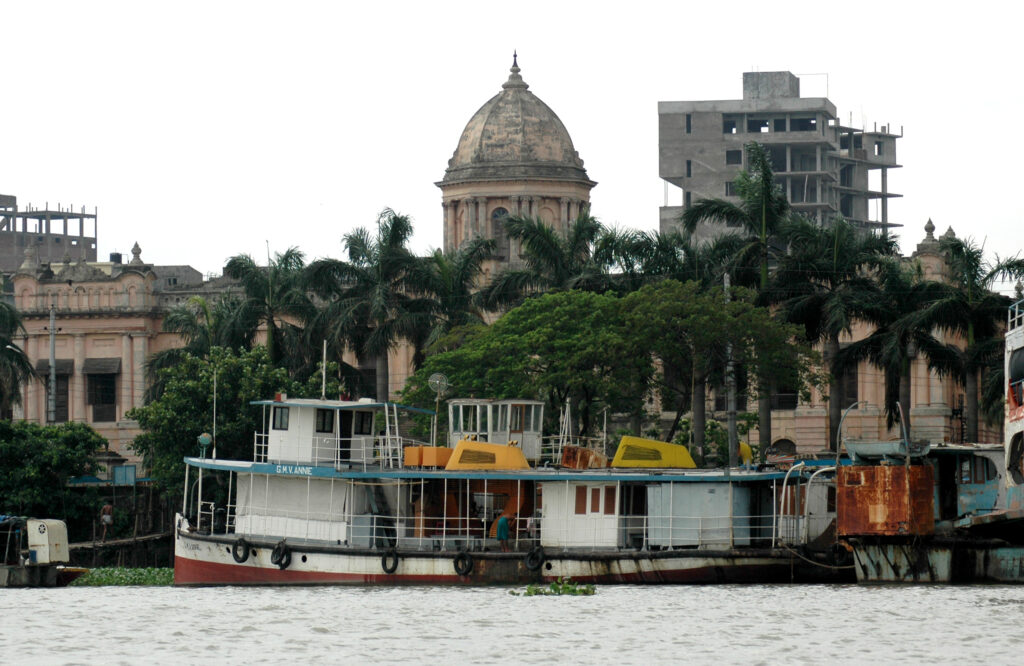
Even though the rich and wealthy people have left the area a long-time ago, and they are moving northwards to find more pleasant sites to live, the river continues to thrive and prosper. However, the full potential of this waterway and the historical sites along the riverfront have not been explored or developed for educational, economic, leisure and tourism purposes. From the standards of major cities around the world, river frontages of capital cities are assets and provide a range of diverse opportunities. In Bangladesh, an awareness of such potentials, and having a will to do something about it, has not, as yet, developed sufficiently.
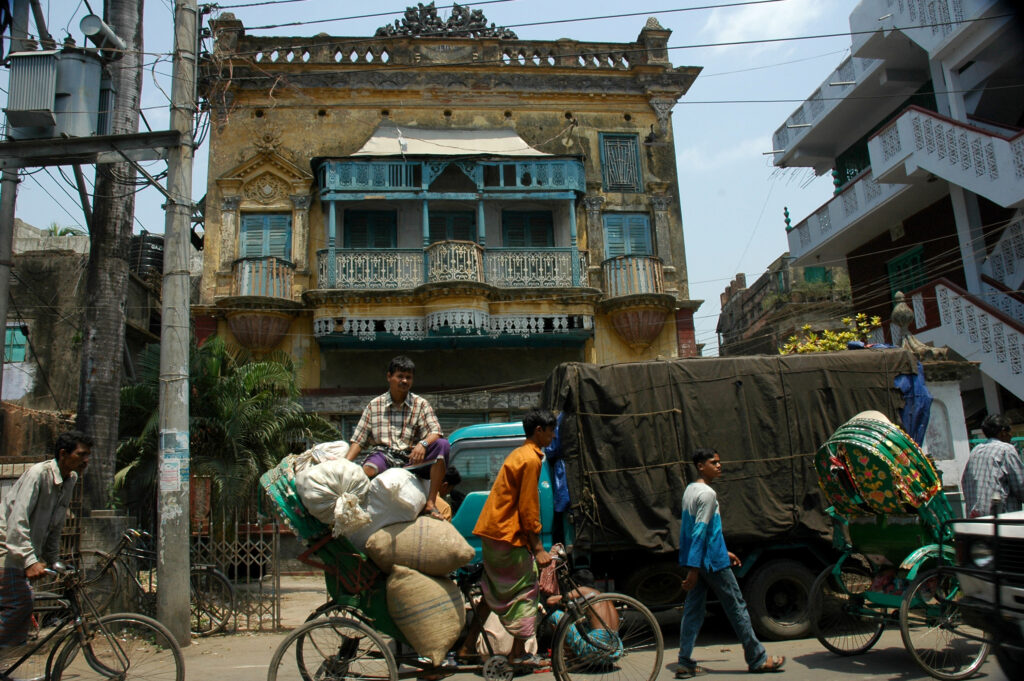
The economic roles played by the river are central to the prosperity of Dhaka City. In addition to being a centre of export and import, boat building and boat repairs are other activities seen on locations along the southern bank of the river.

Throughout the day, these activities generate a range of noise, and boats arrive and leave the ports with various products and goods. People also use the river bathe even though the water pollution level is high and looks dirty.
